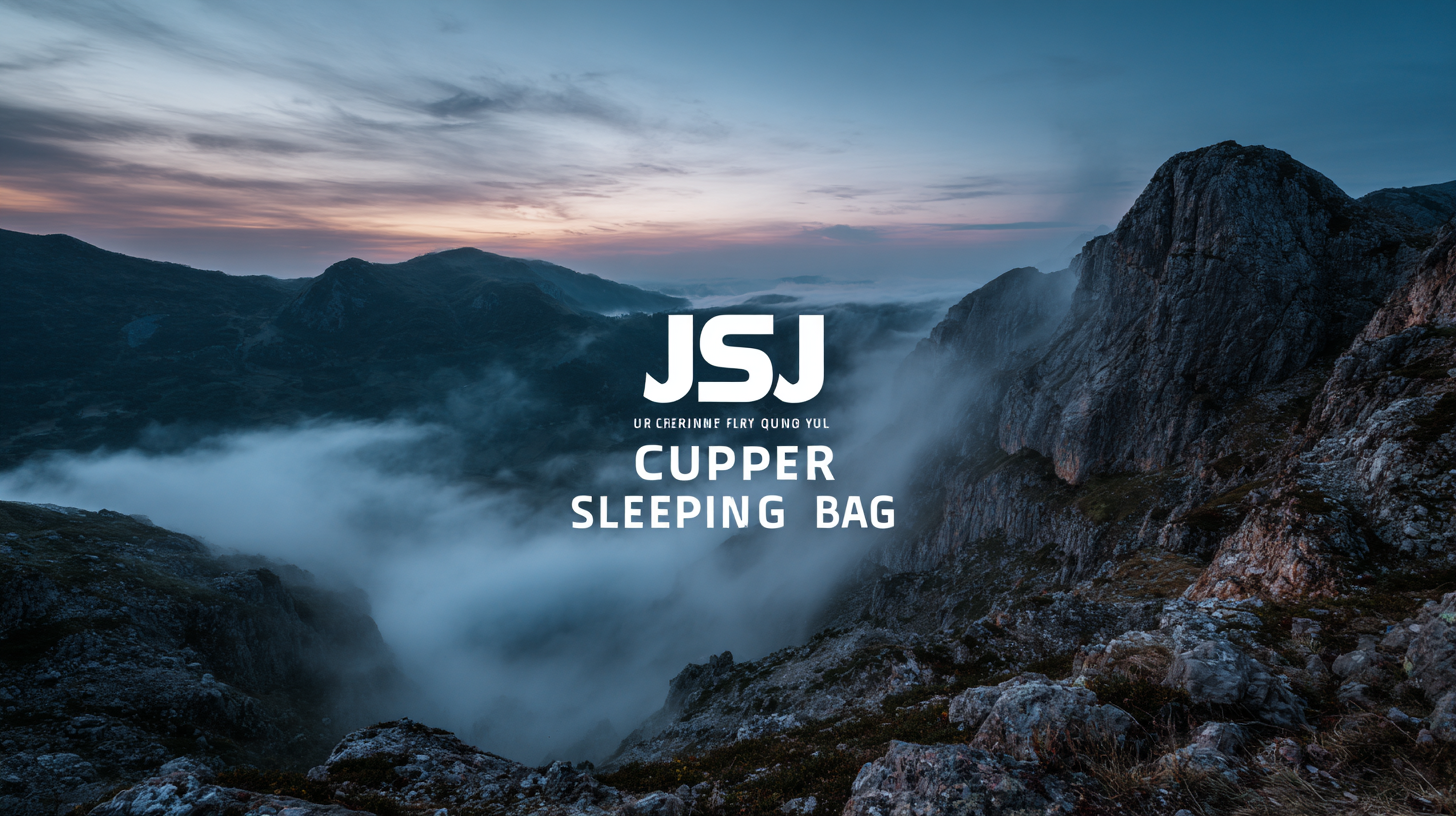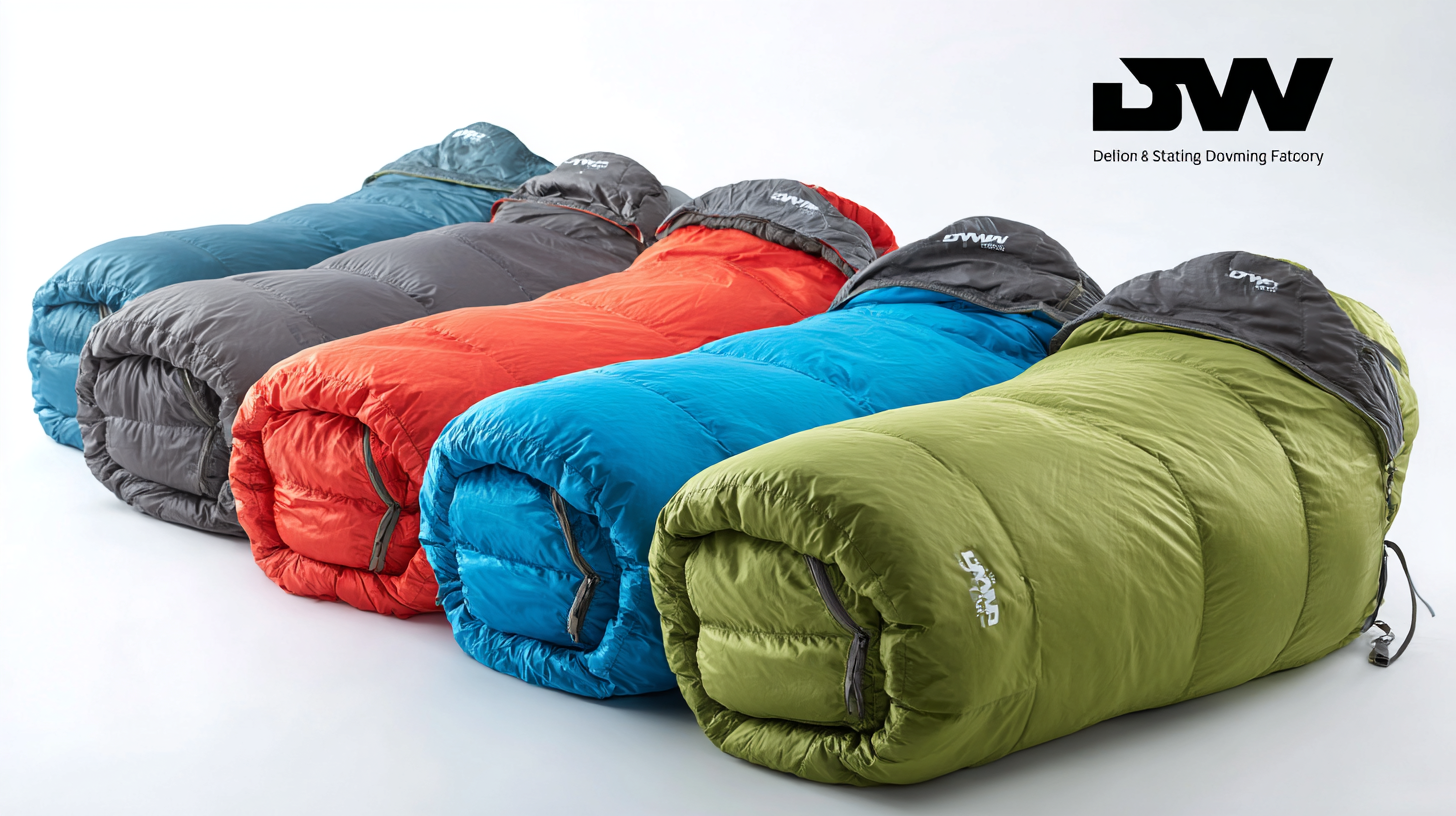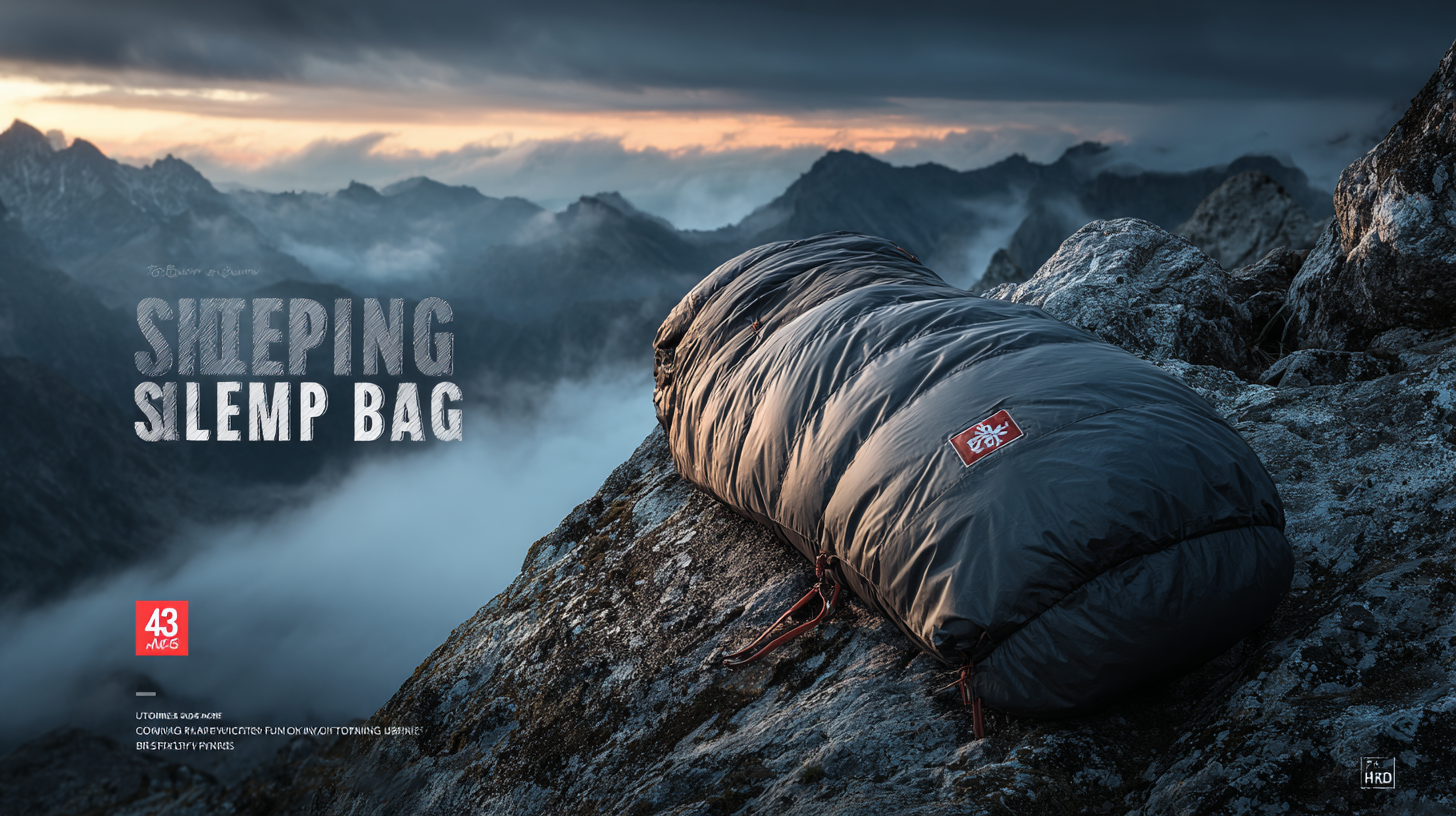Leave Your Message
-
E-mail
-
Whatsapp
When it comes to outdoor adventures, selecting the right gear is crucial for a comfortable experience, and that includes finding the perfect sleeping bag. In this blog, we will guide you through the essential checklist for discovering superior quality sleeping bags specifically from China's leading manufacturing factory. Among the various options available, the "Ultra Lightweight Sleeping Bag" stands out as a top choice for travelers and campers seeking to minimize weight without compromising on warmth and durability. This guide will highlight key features to look for, compare different materials, and provide insights on how to choose the right sleeping bag that fits your needs. Whether you're an avid backpacker or a casual camper, our checklist will ensure you make an informed decision for your next outdoor escapade.

When it comes to outdoor adventures, having a high-quality sleeping bag is essential for a comfortable night’s sleep. China's leading manufacturers have gained a reputation for producing superior sleeping bags that combine innovative features and durable materials. These top-quality sleeping bags often feature advanced insulation technologies, which provide warmth without adding excessive weight, making them ideal for campers and backpackers alike. Additionally, many of these bags are designed with weather-resistant fabrics, ensuring protection against moisture and chilly winds.
Tip: When selecting a sleeping bag, consider the temperature rating. A bag rated for cooler temperatures can double as a versatile year-round option. Look for models that include features like adjustable hoods and draft collars, which help retain warmth during colder nights.
Another essential feature of high-quality sleeping bags is their packability. Many of the leading options from Chinese manufacturers can be compressed into a compact size, easily fitting into your backpack. This is especially valuable for those who prioritize lightweight gear. Always check for the bag's weight and size when packed, and consider how it matches your adventure plans.
Tip: Investing in a sleeping bag with a built-in compression sack can save you space and make packing more efficient for your next trip.

When selecting a sleeping bag, the material composition plays a critical role in determining its performance and durability. High-quality sleeping bags are often made from a blend of synthetic and natural fabrics. According to a report by the Outdoor Industry Association, approximately 60% of outdoor enthusiasts prefer synthetic materials due to their water resistance and quick-drying properties. Fabrics like polyester and nylon not only provide excellent insulation but also contribute to lower weight, making them ideal for backpackers and campers.
The filling material is equally important. Down insulation remains highly sought after for its superior warmth-to-weight ratio, with researchers from the Textile Research Journal noting that down sleeping bags can offer up to 30% more insulation compared to synthetic options at the same weight. However, advancements in hydrophobic synthetic materials are closing this gap, making them increasingly popular for wet conditions. Understanding these materials can guide consumers to make informed choices based on their specific needs, whether for extreme cold or humid environments.
| Material | Insulation Type | Weight (grams) | Temperature Rating (°C) | Water Resistance |
|---|---|---|---|---|
| Nylon Ripstop | Synthetic | 1500 | -10 | Yes |
| Polyester | Down | 1200 | -15 | No |
| Silicone Coated Nylon | Synthetic | 1300 | 0 | Yes |
| Ripstop Polyester | Down | 1400 | -5 | No |
When selecting a sleeping bag for your outdoor adventures, understanding temperature ratings is crucial for ensuring comfort and safety. The EN 13537 standard, widely recognized in the industry, categorizes sleeping bags into four temperature ratings: comfort, lower limit, extreme, and upper limit. For instance, a sleeping bag rated for comfort at 0°C (32°F) is ideal for users who tend to feel cold while sleeping. In contrast, the lower limit rating indicates the lowest temperature at which an average sleeper can remain comfortably warm, emphasizing the importance of choosing a sleeping bag that aligns with your personal temperature preference and adventure conditions.
Moreover, data from the Outdoor Industry Association suggests that approximately 45% of outdoor enthusiasts consider temperature ratings as a key factor when purchasing sleeping bags. This highlights the need for consumers to assess their specific usage scenarios—such as summer camping or winter backpacking—before making a choice. Durable materials and innovative insulation technologies, often found in superior quality sleeping bags manufactured in China, further enhance thermal efficiency, enabling adventurers to withstand various environmental conditions while maintaining lightweight portability.
Remember, the right sleeping bag can make all the difference in your outdoor experience.
When it comes to choosing the right sleeping bag, the design and shape play a crucial role in enhancing comfort and ensuring a good night's sleep in the great outdoors. A comparison of two popular styles—mummy bags and rectangular bags—reveals distinct advantages tailored to different camping needs.
Mummy sleeping bags, with their tapered design and snug fit, trap heat more effectively and reduce excess weight, making them an ideal choice for backpackers seeking ultralight gear while still staying warm in cool weather.
On the other hand, rectangular sleeping bags offer greater space and freedom of movement, ideal for family camping and casual outdoor trips. A recent survey indicated that 65% of campers prefer a sleeping bag with extra room, particularly for summer camping, as these bags can comfortably accommodate shifting positions during the night.
Furthermore, advancements in insulation technology have made it possible to find rectangular bags that provide excellent warmth without adding significant weight, catering to those who prioritize comfort without the ultra-light constraints. As the outdoor equipment market evolves, it's clear that understanding the impact of design on comfort can significantly enhance the camping experience.
When evaluating the durability of sleeping bags, it's essential to understand the industry standards and the testing methods that ensure products meet consumer expectations. Leading manufacturers in China adhere to rigorous guidelines established by organizations such as the American National Standards Institute (ANSI) and the International Organization for Standardization (ISO). These standards not only define performance metrics like tear strength and insulation retention but also help consumers identify high-quality sleeping bags designed to withstand the test of time.

To assess the longevity of sleeping bags, manufacturers employ a variety of testing methods. For instance, the water resistance of fabrics is tested using hydrostatic head measurements, which simulate real-world conditions. Additionally, abrasion resistance tests mimic wear and tear over extended use, providing a clearer picture of how a sleeping bag will hold up on camping trips or outdoor adventures. By prioritizing these evaluations in the production process, manufacturers can confidently offer products that not only meet but exceed consumer demands for durability and resilience in various environments.
